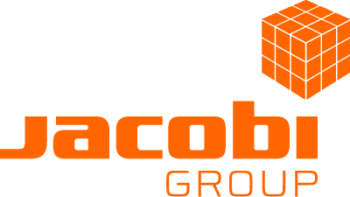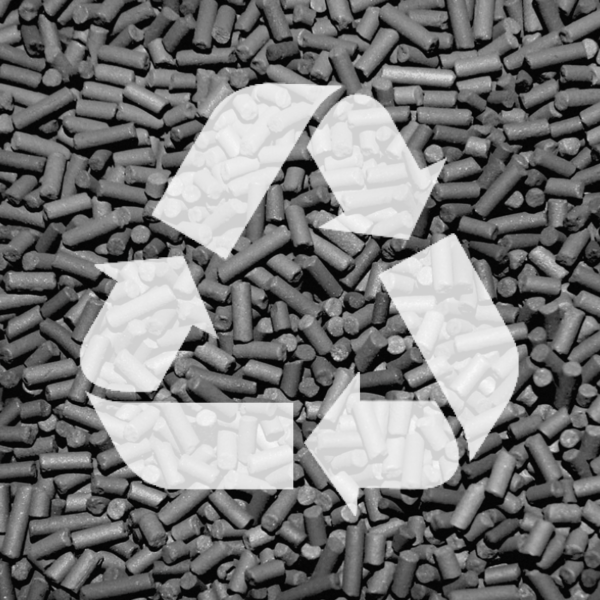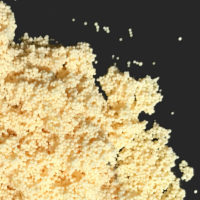Scrap candy is formed during the production of sweets. The scrap candy is formed when changing from one batch to another (intermix), or due to off specification product (candy) or bad packaging due to failing equipment (eg, malfunctioning of packaging machinery).
Typical contaminants that need to be removed in the scrap candy recovery process are colour, taste and odour. Most of the additives are usually well known to the producer.
Activated carbon for scrap candy purification has become a standard process step in the sweet manufacturer’s recovery process. A typical recovery process is:
Scrap candy
↓
Dissolved in hot water to produce a solution of 40 – 50 BRIX
↓
Adjust to 5.0 to 6.0 pH
↓
Filter to remove packaging
↓
Resins to remove colour
↓
Activated carbons to remove esters (odour and colour)
↓
Vacuum evaporator up to 90°C
Powder activated carbon is often used in the scrap candy recovery process, but granular activated carbon (GAC) is also used in mobile filters to recover sweeteners from scrap candy and produce a reusable product.
Converting from powder activated carbon to granular activated carbon has several advantages for the user:
- A reduction of the activated carbon consumption (Granular activated carbon (GAC) consumption is usually less than 30% of powdered activated carbon (PAC) consumption)
- Granular activated carbon (GAC) loading is higher
- No activated carbon overdosing by operators to avoid off spec products
- Granular activated carbon (GAC) deals better with process fluctuations
- Lower product (candy) losses:
- The sweetening off process of granular activated carbon (GAC) is more efficient compared to powdered activated carbon (PAC).
- Lower carbon consumption means lower volume to be sweetened off.
- Sustainability:
- Granular activated carbon (GAC) can be recycled by thermal reactivation
- Reactivation has more than five times less CO₂ emissions compared to the production of virgin activated carbon
- Lower granular activated carbon (GAC) consumption leads to lower CO₂ emissions during its production compared to powdered activated carbon (PAC)
- Lower handling costs
- Lower maintenance costs
SCRAP CANDY: MOBILE FILTERS
AquaFlow™
The AquaFlow™ V2 mobile adsorbers are designed and built for use in the scrap candy recovery process. The filtration unit is a combined transport vessel and adsorption system delivered, prefilled with selected adsorbent media, to ensure cost effective purification results. The granular activated carbon arrives in a closed container ready for use and so the plant operators do not come into contact with either the fresh or saturated product.
SCRAP CANDY: SOLUTIONS
Auxiliary equipment and additional services
In addition to mobile filters and different media, Jacobi Services also offers various items of auxiliary equipment and additional services, including:
A series of removable insulation jackets with electrical heat tracing to maintain the temperature and to protect operators when the AquaFlow™ mobile filters are operated at higher temperature.
Isotherm testing with the user in order to compare the powdered activated carbon with granular activated carbon.
Recycling, Energy Recovery or Disposal Services
Jacobi Services offers customised reactivation ReSorb™ Solo where the spent carbon storage, reactivation and reactivated carbon conditioning are strictly separated from other customers to ensure that a customer gets their own activated carbon back.
Jacobi Services also offers spent carbon take back and virgin carbon delivery when the annual spent activated volume is too low for customised reactivation.
SCRAP CANDY: PRODUCTS
ColorSorb™ H620
ColorSorb™ H620 is a high purity, granular activated carbon, that is effective for decolourising a wide range of liquids, including foodstuffs and industrial process streams. The high mesoporosity also allows the effective removal of colour bodies and complex organic molecules and provides an excellent adsorption capacity. An important feature of this material is the supplementary washing process applied during production to reduce the level of soluble inorganics that may cause issues in acidic treatment applications. The product meets the requirements of the Food Chemical Codex. This product can be recycled by thermal reactivation, an environmentally responsible method that helps to reduce atmospheric CO₂ emissions and contributes to the sustainable use of the world’s resources.
ColorSorb™ HP-120A
ColorSorb™ HP-120A is a high purity, powdered activated carbon, that is effective for decolourising a wide range of mildly discoloured liquids, including foodstuffs and industrial process streams where processing at a neutral pH range is necessary. This grade of activated carbon has a predominantly macroporous structure for efficient diffusion and adsorption of high molecular weight organic substances in liquid phase decolourisation applications. The product is subjected to a rigorous washing process during manufacture to produce an adsorbent with a surface pH that has minimal effect on the liquor being treated. The powdered particle size distribution of ColorSorb™ HP-120A is carefully controlled to ensure efficient adsorption kinetics and maintain high filterability characteristics. The product meets the requirements of the Food Chemical Codex.
SCRAP CANDY: ION EXCHANGE RESINS
Resinex™ AD series
Several Resinex™ AD synthetic adsorbers can be used for decolourisation of food stuff together with activated carbon. Synthetic adsorbents are non-functionalised porous polymers with a styrenic or acrylic matrix. One of the major interests of synthetic adsorbers is that the adsorbed substances can be easily eluted from the matrix by using acid, caustic or organic solvent. The resin is then ready for a new service cycle. The most popular Resinex adsorbents in food processing are Resinex™ AD-3008, AD-3004 and AD-3300.
Resinex™ TPS
Resinex™ TPS strong base anions products can be used to remove colour in food stuff, such as cane sugar or liquid sugar. The chemical nature of the matrix and the porosity are different depending on the level of colour that needs removing. Resinex™ TPS-2207 is recommended for liquor below 200 ICUMSA, Resinex™ TPS-2300 or Resinex™ TPS-2308 for liquor between 200-800 ICUMSA, and Resinex™ TPS-2400 for liquor above 800 ICUMSA. Resins are regenerated using caustic brine or with a sucrose solution containing calcium hydroxide and chloride salts to minimise waste regenerants.
GET IN TOUCH
Fill out the short form below and or team will be in touch.






